Amazon Halo
Two-minute review
At the end of 2020, Amazon quietly released its fitness wearable, the Amazon Halo – but only in the US. Without a screen, it’s a pure activity tracker rather than a smartwatch, but the partnered app has a few neat features that you won’t find on any other fitness device.
Surprisingly, these features don’t include the integration you’d expect with an Amazon device – there’s no Alexa assistance, no voice control, and no integration of your connected Amazon account.
Instead, Halo’s standout features include monitoring your voice for signs of stress or strain as you talk throughout the day, and using the paired phone app to take photos of your body to calculate your body fat percentage. If you’re already thinking about privacy concerns at this point, Amazon has insisted that both features are opt-in (better still, Amazon explicitly laid out what data is and isn’t kept on the device here).
If you just want the basics, the Halo can track your fitness activity and sleep, and you can view your stats on the connected app. There’s an optional subscription service available through the app (you get six months free with your Halo purchase, and it’s $4/ around £3 / AU$5 a month thereafter) which provides workout classes as well as Labs, a patchwork collection of wellness and nutrition mini-courses that aim to improve your fitness and sleep scores (Halo’s two key health metrics – more on those below).
But it’s concerning how many features you don't get without a subscription: you’ll only have access to a limited selection of Labs and neither the Body-scanning nor Tone features. You also won’t get to see your fitness or sleep scores, the latter of which seem simple enough to be included as standard. The Halo isn't useless without subscribing, as it can still count steps, heart rate, calories, and time asleep/awake, per Amazon’s FAQ. A six-month free trial with purchase lets you try out the service, unless you bought or were given the Halo secondhand.
The Halo is a screen-less tracker – it’s basically an oblong pod on your wrist with a single physical button, an LED light, and a microphone, with a fabric wrist strap wrapped over it (or rubber, if you opt for the fitness-type band). Given that there’s no display, the button is only used for muting your mic for privacy while using the optional Tone feature, which periodically listens to your vocal intensity and can be set up to nudge you when it detects you’re in a mood.
The Halo is comfortable enough to wear, though it’s a bit wide and can rub up against the wrist joint, and can require a little adjustment before it sits right. After that, you’re likely to forget it’s there, given that you won’t be looking at its screen for insights – instead, you’ll have to pull out your phone and switch to the Halo app for those.
Rather than a shortcoming, this is the key to the Halo’s appeal. Like other basic trackers the Halo lacks vibration, so it can’t be used for reminders, notifications, or wake-up alarms. It’s a refreshingly minimalist experience.
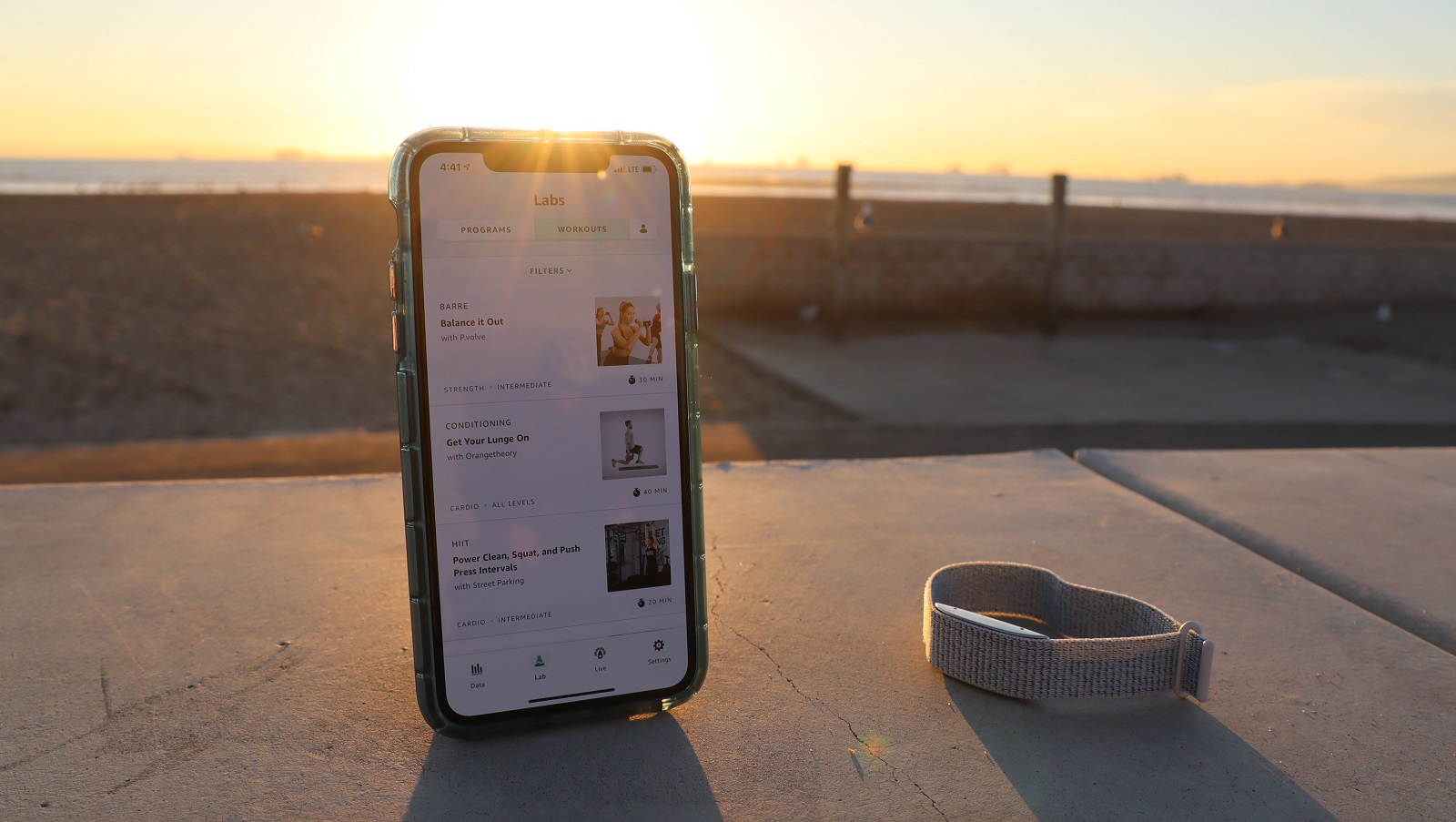
Amazon Halo price and release date
Amazon introduced the Halo in August 2020 and started seeding it to early users before fully releasing it in the US in December 2020. It hasn’t expanded anywhere else thus far, although Amazon says it will be available in other regions later.
The Halo costs $99 (around £75 / AU$130) and comes in three color combinations, split between the fabric band and paired sensor capsule: black/onyx, a pinkish ‘blush’/rose gold, and light gray ‘winter’/silver. It also has sporty fitness bands made of a neoprene-like rubber material (pocked with holes to save weight) which come in a variety of colors – ours was black on the outside with a mint green on the underside.
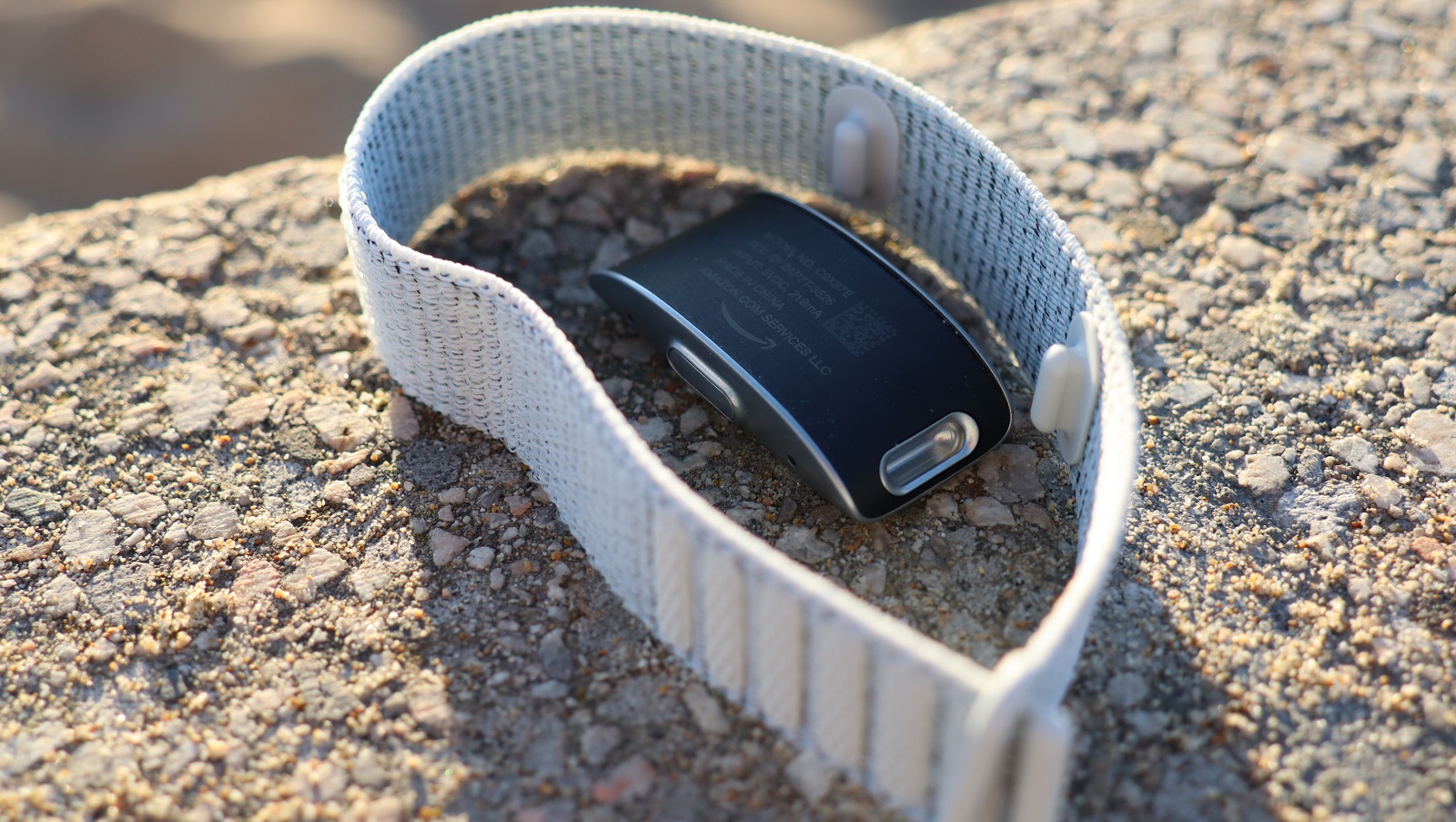
Design
The Amazon Halo hardware is a metallic capsule about the size of other fitness trackers. It has a hemispherical silhouette: an inner flat side with sensors that presses against the skin, and an outer curved side with prongs to hook into a wrist strap.
The strap wraps over the device, but since there’s no display, that’s not a problem. What you see of the tracker itself are flat metallic edges, with the side intended to face the viewer featuring a light on the left, a microphone on the right, and a single button. Its only purpose? Hold it until the light blinks red to turn off the mic, hold it until it blinks green to turn it on.
The Halo isn’t too heavy, and you get used to wearing it, even at night - which you’ll be doing, since the extensive battery life means you can wear it for the better part of a week without charging. Its oblong shape means it can be uncomfortable on bony wrists, and its flat sides tend to catch on jacket cuffs more than most of the round-edged fitness trackers and smartwatches we’ve tried. That’s not a dealbreaker, just something to keep in mind.
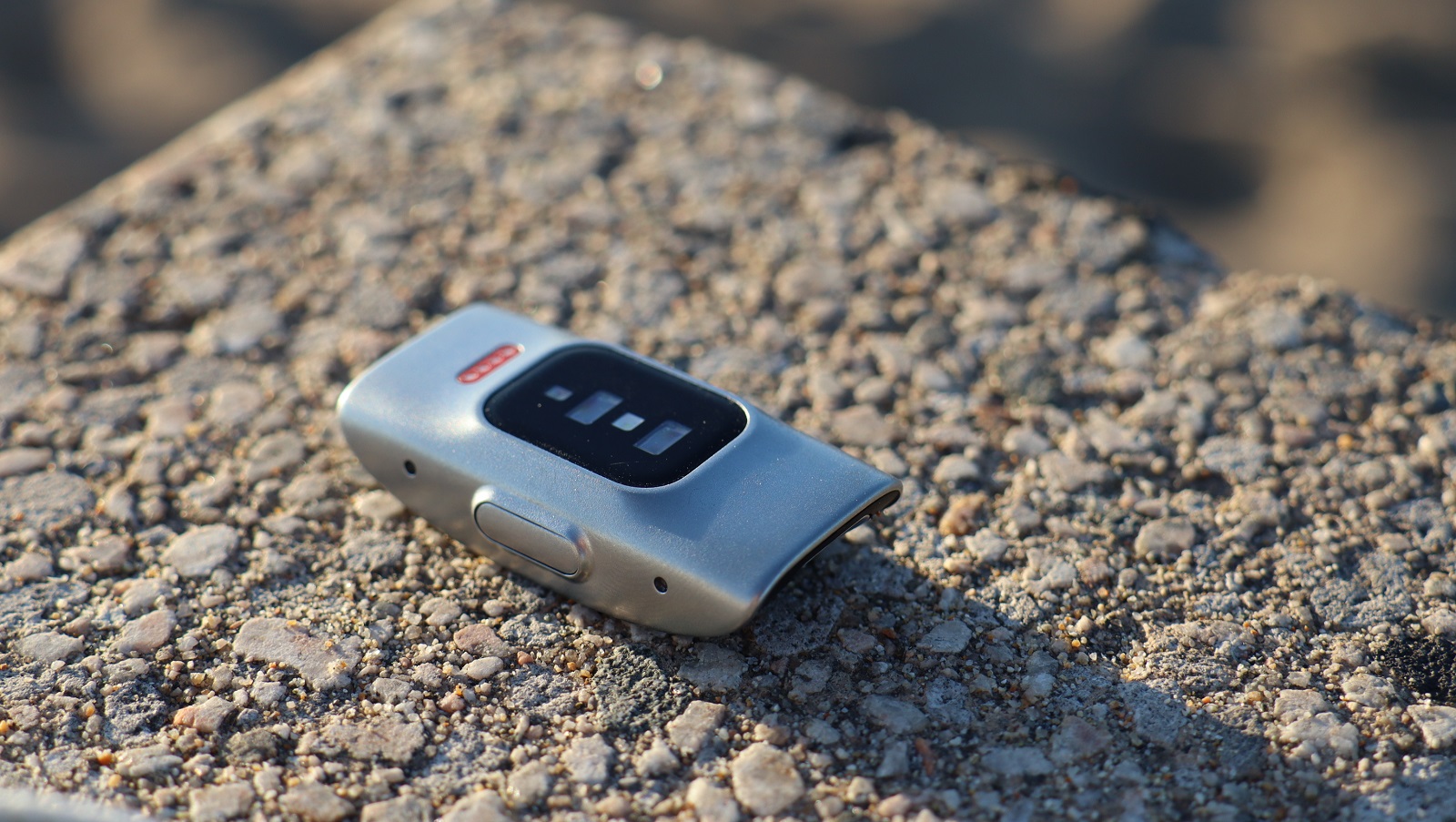
The Halo is shower safe, though we didn’t get an exact figure on its water- and dust-resistance. The fabric straps that come with the wearable are also fine to take into the water; they seem similar to the woven synthetic fabric found wrapped around smart speakers and other tech products, and lock in place comfortably with a hook-and-loop fastening.
The fitness-style band (sold separately) is a silicone texture pockmarked with holes and a much more commonplace tang buckle system, and while it’s meant for workouts, we preferred this one for daily use despite the bands being fairly easy to switch out.
As previously mentioned, the wearable doesn’t have any haptic vibration – and without a display, there’s no way for the Halo to nudge you for reminders or notifications, routing all interaction through the smartphone app. Unlike other fitness trackers, it’s impossible to interact with the Halo itself – and since you’ll only have to recharge it once a week, you’ll likely forget it’s there. We tested it while wearing another smartwatch, with fitness on our mind, and it barely registered in our day-to-day life.
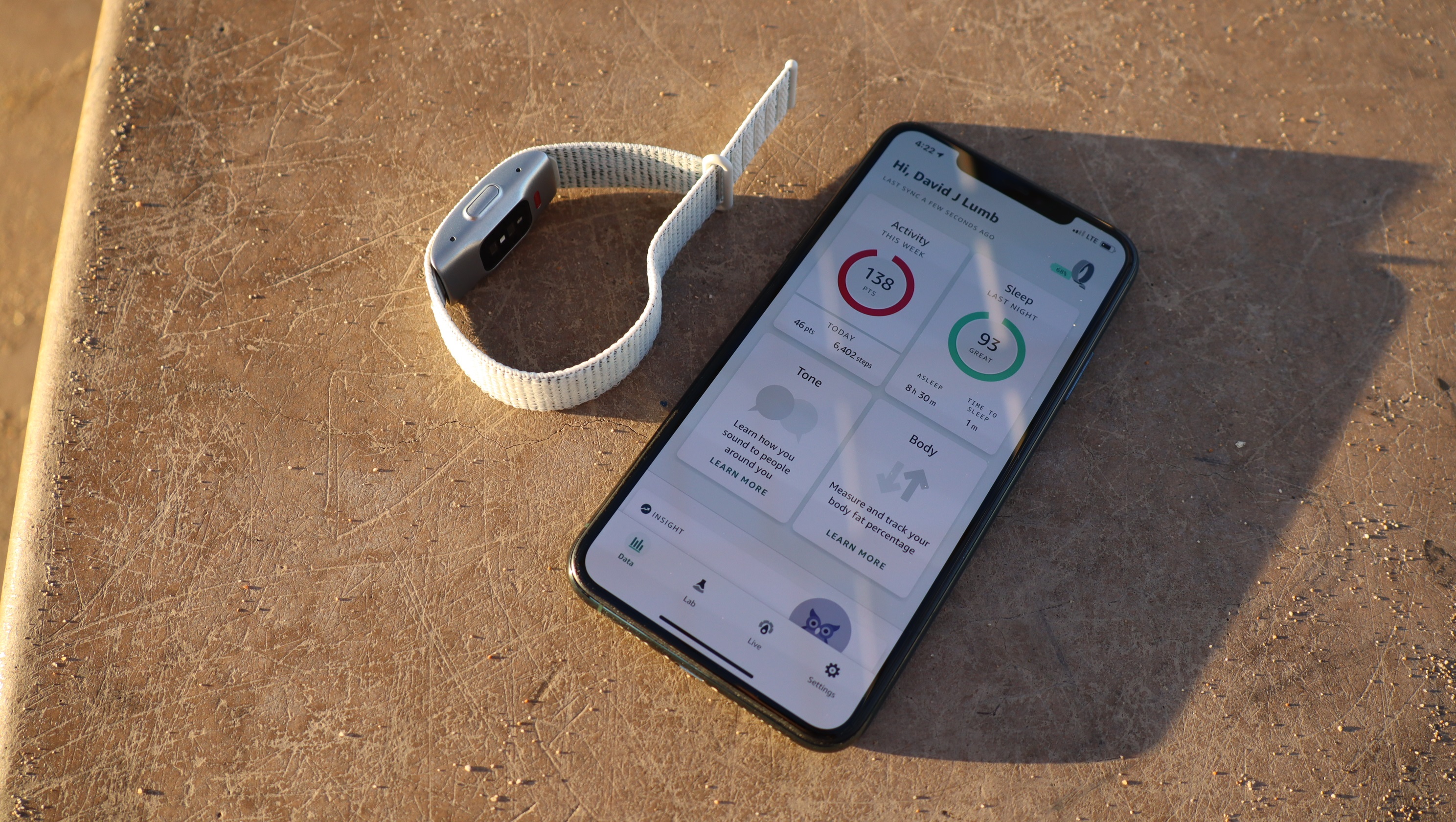
Fitness
As might be expected from hardware that isn’t designed to be interactive, the Halo passively tracks workouts and feeds all information to the phone app it’s paired with. This is a foundational choice that defines how the device is used and what kind of feedback you’ll get using it.
If you want a device that gives you easy-to-access info in the middle of a workout, the Halo isn’t really for you. Yes, you can nudge the app to sync with your device and display your workout points progress as well as heart rate, but that’s a clumsy way to make the Halo work in a way it’s not terribly intended to. That’s because the Halo isn’t intended to track moment-to-moment workouts, or even fitness over days.
Instead, the Halo uses a proprietary Fitness Score counted every week, which you can see when opening the dedicated smartphone app. Score at least 150 points after seven days and you’ve met your goal (exceed it greatly and the app will increase the goal). Rather than just counting exercise, ‘movement’ is counted across light, medium, and heavy categories that add more points for more strenuous activity - but roughly, one minute of medium activity (like walking outdoors) will award under one point, and one minute of heavy activity (like running) adds over a point. (Light activity that doesn’t push you to exertion, like walking around the office or grocery store, adds a point every 20 minutes.)
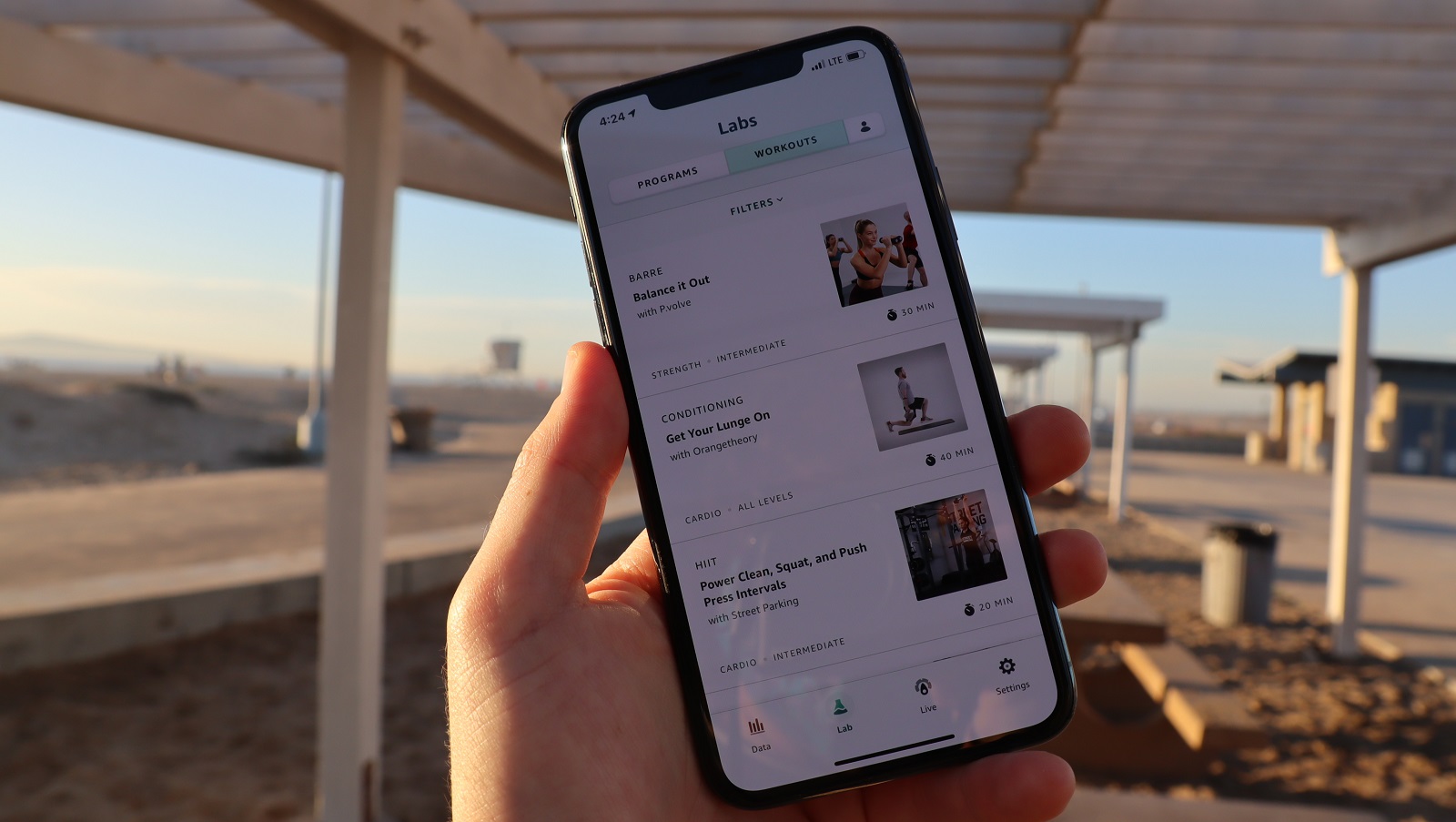
For example, one day, I walked for 24 minutes to add 17 points and ran for 28 minutes to add 40 points. The Halo automatically tracked and properly categorized both activities, but I’d also lifted weights for 10 minutes, which I had to add manually – this awarded me 10 points. You’re also docked points for being sedentary - sitting for eight hours at a time – and I lost 20 points over a week. This is a subtle nudge, and only noticeable in Fitness Score breakdowns.
The Halo’s Fitness Score is based on general recommendations from the American Heart Association that adults should exercise for 150 minutes every week, as well as guidelines from the World Health Organization and CDC on physical activity. For the everyday user, the Halo is a philosophical break from other fitness wearables that nudge users into strenuous activity every day. Instead, the Fitness Score accounts for off days when you just don’t have it in you to exercise, which is pretty considerate.
Amazon explains its rationale within info cards on the Fitness Score page (click on the Fitness Score ring in the app’s home page to get there). These cards are spread throughout the app, and are fairly easy to understand.
Your Halo subscription also provides access to guided workouts (with video and/or audio instruction), which are curiously located within the ‘Discover’ tab. Why? Because many are part of the Labs self-improvement initiatives - more on those later, but you can manually watch the guided workouts whenever you want, too.
The workouts, created by third-party companies like Aaptiv and Orangetheory, vary in intensity and personality of the coaches, but they work similarly to those from other recorded workout services like Apple Fitness Plus and obé.
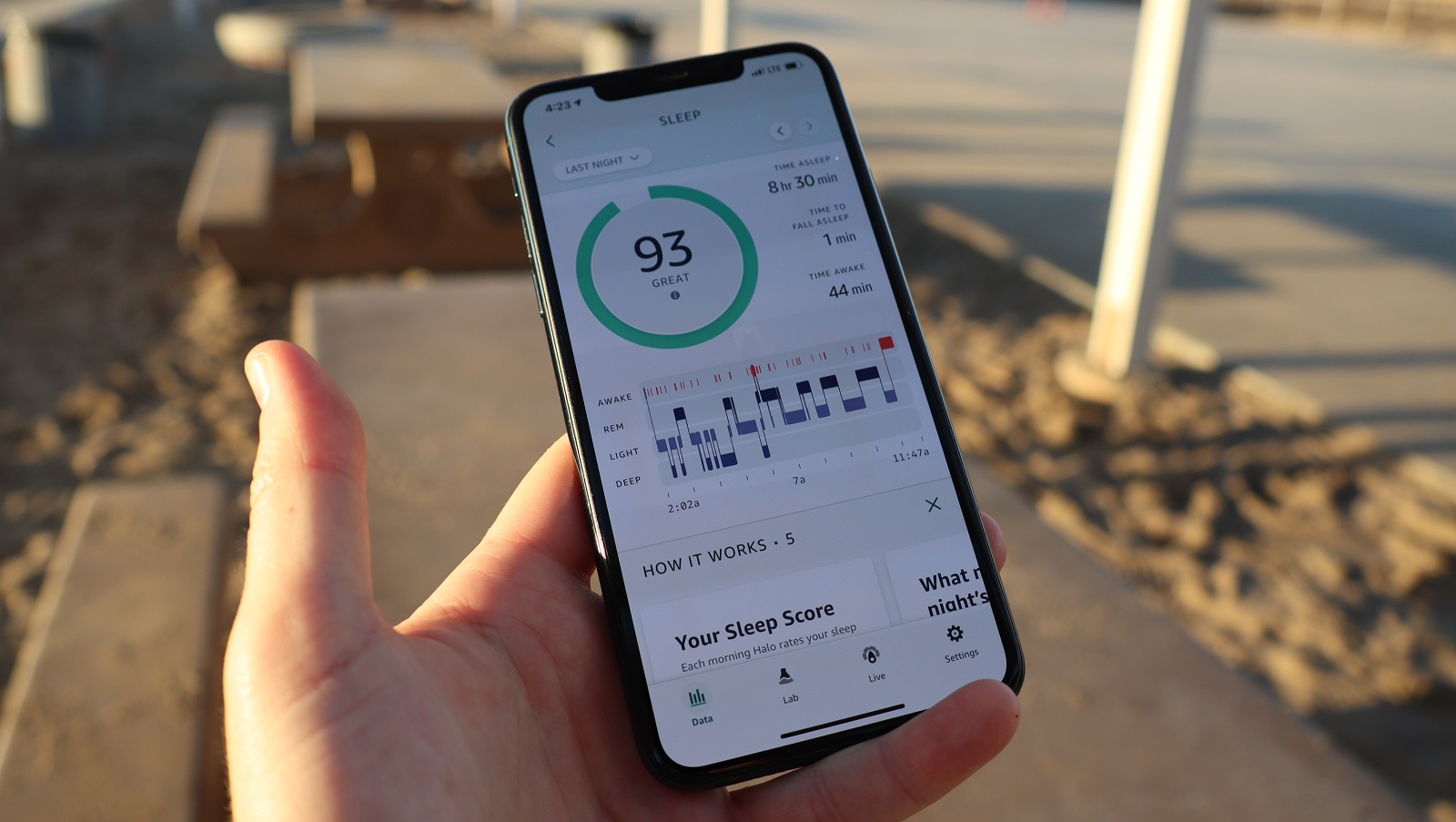
Sleep
The Halo’s other health-related metric, visible front-and-center on the app’s home screen, is the Sleep Score. The Halo measures quality of sleep, accounting for total time slept, how long it took to fall asleep, time spent in each sleep stage, and how often you woke up, and gives you a score between 1 and 100. Over 85 points is a good night of sleep, between that and 70 is good, 69-50 is okay, and anything less Halo considers poor sleep.
There’s an info card in the app that explains the metric and all the stages of sleep, as well as tips to improve your score (and thus, your sleep), like adjusting the noise and temperature where you’re bedding down. There are even more actionable programs in Labs, though they’re more experimental low-key suggestions than techniques to ensure better sleep.
We’ll be honest; if we feel terrible after a night of sleep, it’s not too helpful to have a number telling us exactly how many points we’ve come under what would be considered ‘good’ sleep. But it is helpful to see info like time asleep sans interruptions, time to fall asleep, and time awake. Even better is the graph showing how long you spent in each sleep stage, as well as the intervals spent awake - especially if you can identify external factors (like certain furry intruders, say).
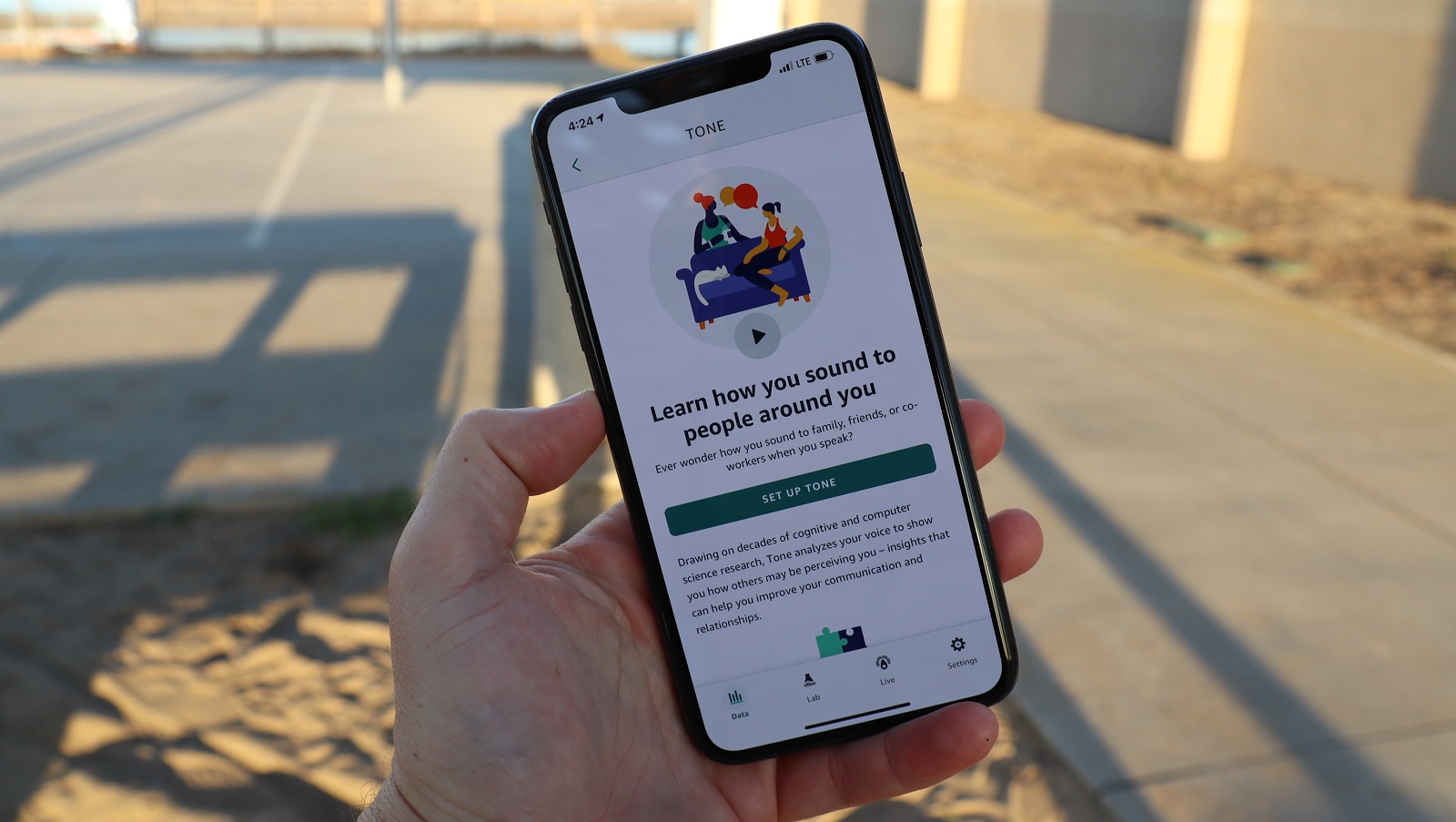
Features: Tone and Body
The Amazon Halo has two features included with a subscription that are both technically health-related but are certainly not typical for fitness wearables to have: Tone and Body.
Tone is the odder feature, though it’s certainly in Amazon’s wheelhouse to analyze voices. Tone allegedly measures your voice throughout the day to track your mood. Keep in mind that turning this feature on will require it to listen constantly for your voice, thus drastically reducing the wearable’s battery time from seven days to two (or one, if you ramp up Tone’s sensitivity to listen in more frequently).
We didn’t find the feature helpful enough to earn this extensive battery reduction, though two days of battery life is still in line with some smartwatches. That may be different if you find it more useful to reflect on your tone of voice, both for examining your own mood/mental state and knowing how you’re coming off to others, at least according to the Halo.
Tone measures your vocal tone and word selection along two axes: positivity and energy. High positivity and energy correlates with amusement and delight, but low positivity and energy are for irritated or enraged moods. You’ll get a report each day indicating high and low points, though you’ll have to remember what was happening when the Halo picked up on your moods. In that way, it’s a little passive at the best of times.
At worst, it’s not terribly useful - because right now, when this reviewer and many others around the world are working from home or vacated workplaces, nobody is talking. That’s the nature of locked-down living. For what it’s worth, the limited results we received were uniformly low-energy, which makes plenty of sense in a period of global pandemic.
The Halo app can give you feedback in real-time, like if you’re rehearsing for a presentation - just click the ‘Live’ tab on the bottom. Vocal samples are calculated on the phone (not on servers) and are never shared with other Amazon teams, the company assured TechRadar.
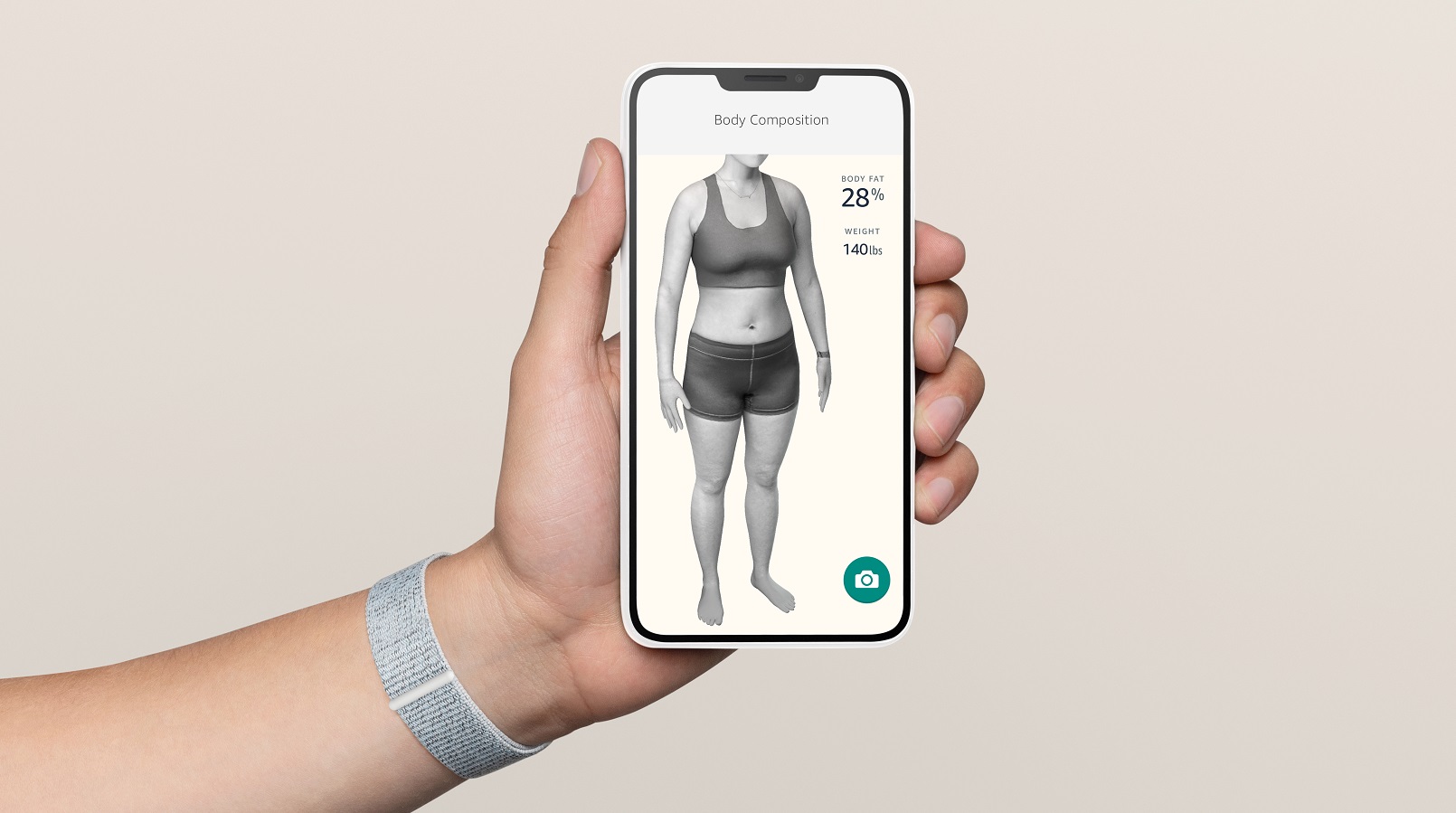
The Body feature is a more straightforward fitness feature, though it’s certainly unexpected: the app prompts you to use your smartphone to take four photos of your body (front, back, and from each side) in skintight clothing to calculate your body fat percentage. Why? Amazon claims body fat is a more insightful metric than weight or even body mass index (which doesn’t differentiate between fat and muscle).
It’s certainly an impressive feat, as the four photos are run through three algorithmic models to estimate your fat percentage and, with provided weight, calculate how much is ‘lean mass’ and how much is ‘fat mass’, the latter of which is ostensibly excess.
The calculations also create a standalone 3D monochrome model of your body, in all its nearly-naked glory. Amazon asserted that, in a pilot study, Weight Watchers fans who were given access to this feature were excited about it, as it gave them a clear view of their body from plenty of angles.
You may find this exposes your physicality in a manner that’s frankly rude, as our reviewer did, but it undeniably gives you more visibility than a simple mirror would. Once you’ve gotten your 3D scan, however, you can scroll down to see a model with a body fat percentage slider to estimate your body changes should it increase or decrease, probably for motivation and definitely for terror.
Overall, Body is a fascinating application of technology available in anyone’s smartphone (Amazon noted that most modern phones, with the exception of some 2016-and-earlier phones like the LG Stylo 3, should be able to use it). It’s useful as far as folks will want a camera estimation of their body fat percentage for their own goals.
As far as privacy goes, Body scans are briefly and securely processed in the cloud (presumably AWS) and then automatically deleted after sending the results to the user’s device, Amazon assured TechRadar. That means a user’s health data is gone should the device holding the data be lost or wiped, so they have the option of storing it online through Amazon’s servers.
Perhaps more importantly, we’ve been assured that the Halo team does not share any personal info with any other Amazon team. Further, user health data is only available on the Halo app, not on Amazon.com, nor is it linked with a user’s personal Amazon data.
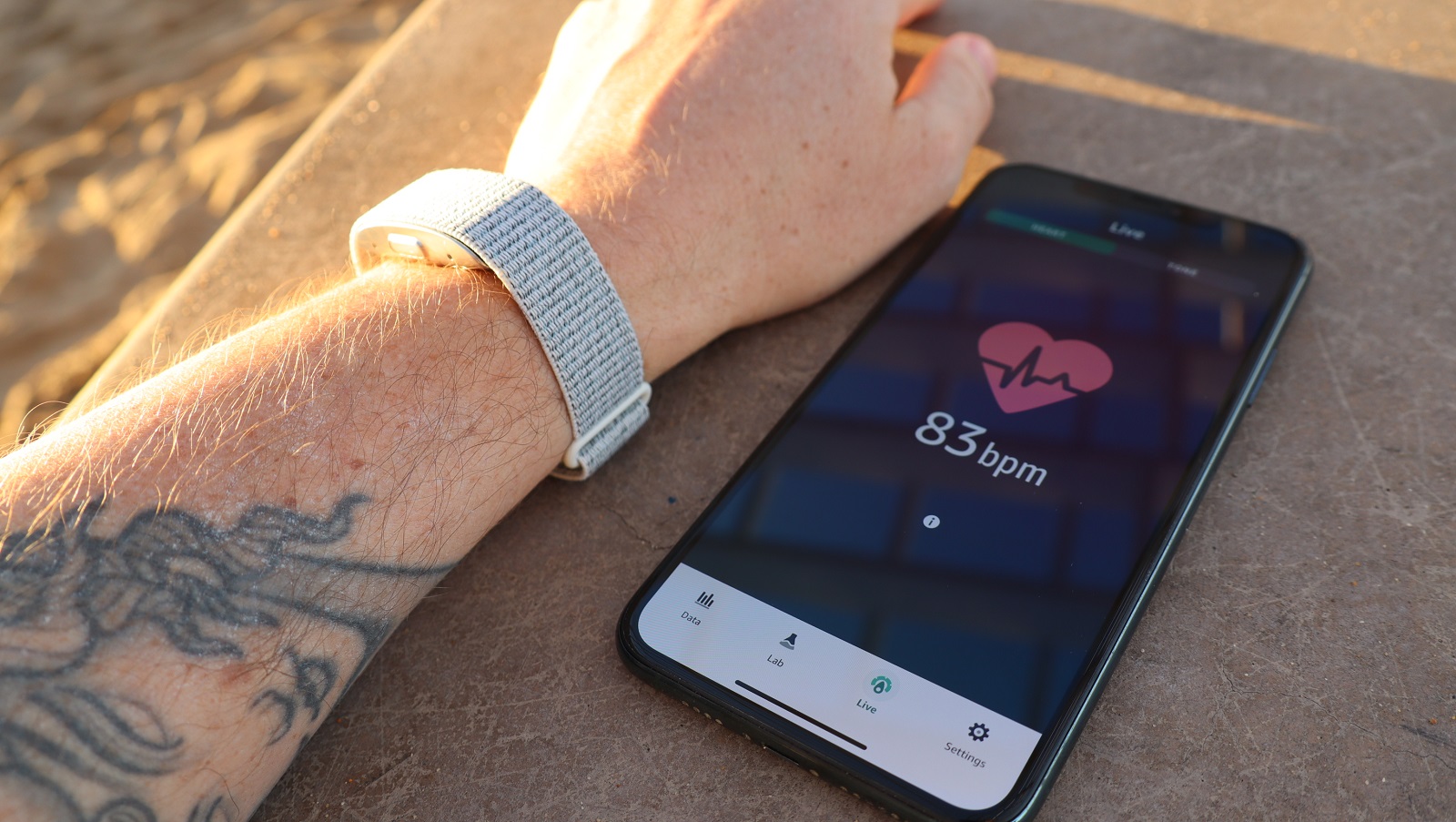
Buy it if…
You want a fitness tracker that won’t distract you
The Amazon Halo is a fitness tracker that tracks everything without a screen or haptic feedback. If you don’t want to be bugged by notifications, texts, or calls, the Halo is for you. Best of all, with the Tone feature off, its battery lasts a full week.
You want a cheap fitness tracker that could keep getting better
The Amazon Halo is reasonably affordable for a fitness tracker - plus, most of its functionality is located in its phone app, which the Halo team might expand with even more features.
You want interesting tracking and workouts rolled in one
The Halo tracks vocal tone and sleep, as well as fitness in movement rather than workout terms, making for a more intriguingly cohesive picture of personal health and wellness.
Don’t buy it if…
You want a fully-functional fitness smartwatch
This might seem obvious, but the Amazon Halo’s lack of a screen and haptics means you can’t check your workouts unless you bring up your phone and check the app. If you want mid-workout updates on your wearable, look elsewhere.
You want a wearable with advanced tracking
The Halo monitors heart rate and movement, but that’s where its tracking ends. If you want some of the more advanced features like blood oxygen measuring, try the Apple Watch 6 and Samsung Galaxy Watch 3.
You want an even cheaper basic fitness tracker
Yes, there are more affordable fitness trackers that have basic fitness-monitoring capabilities than the Halo’s $99 (around £75 / AU$130) asking price – try the FitBit Inspire 2, which starts at $60 / £50 / AU$130.
0 comments:
Post a Comment